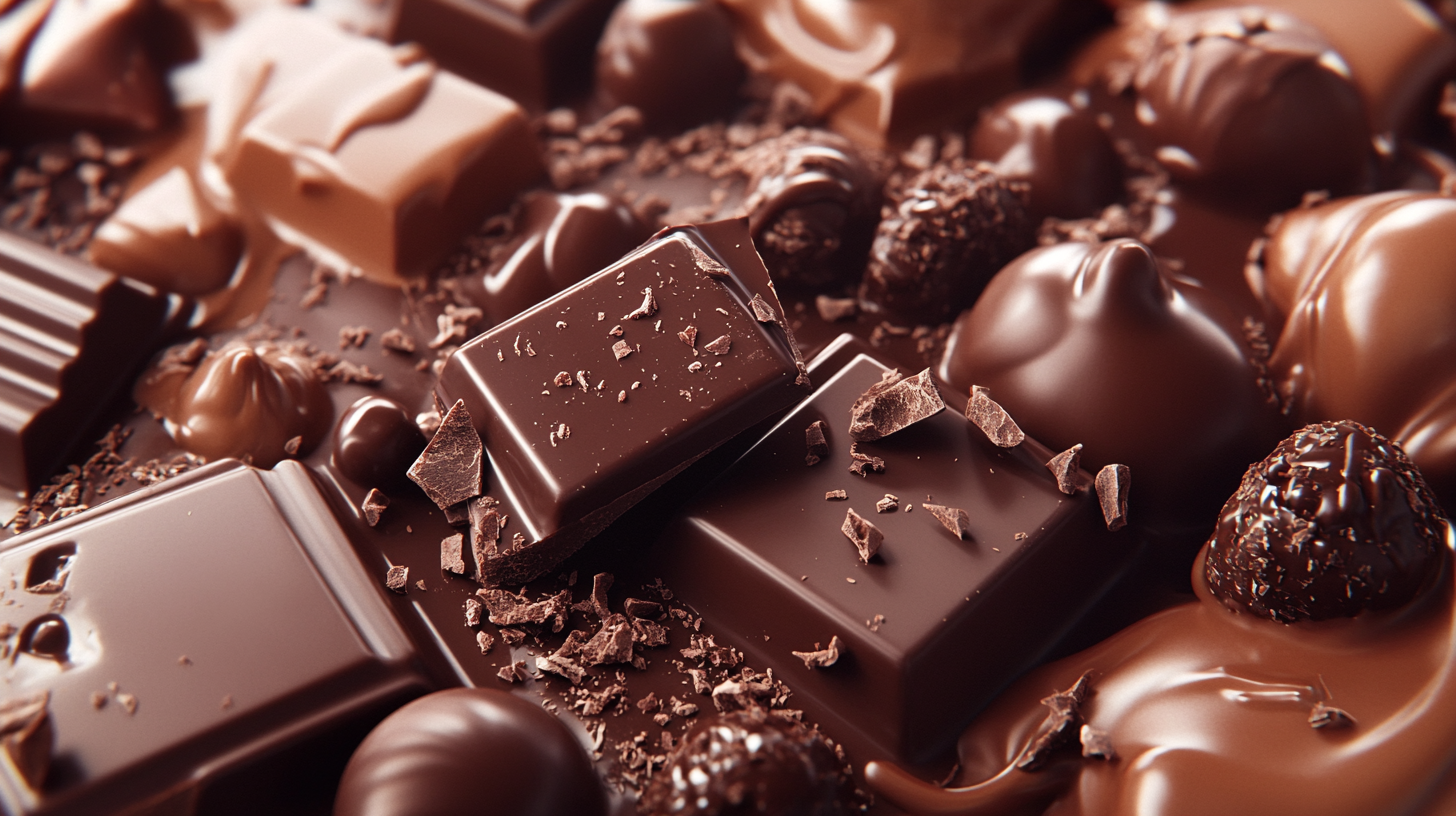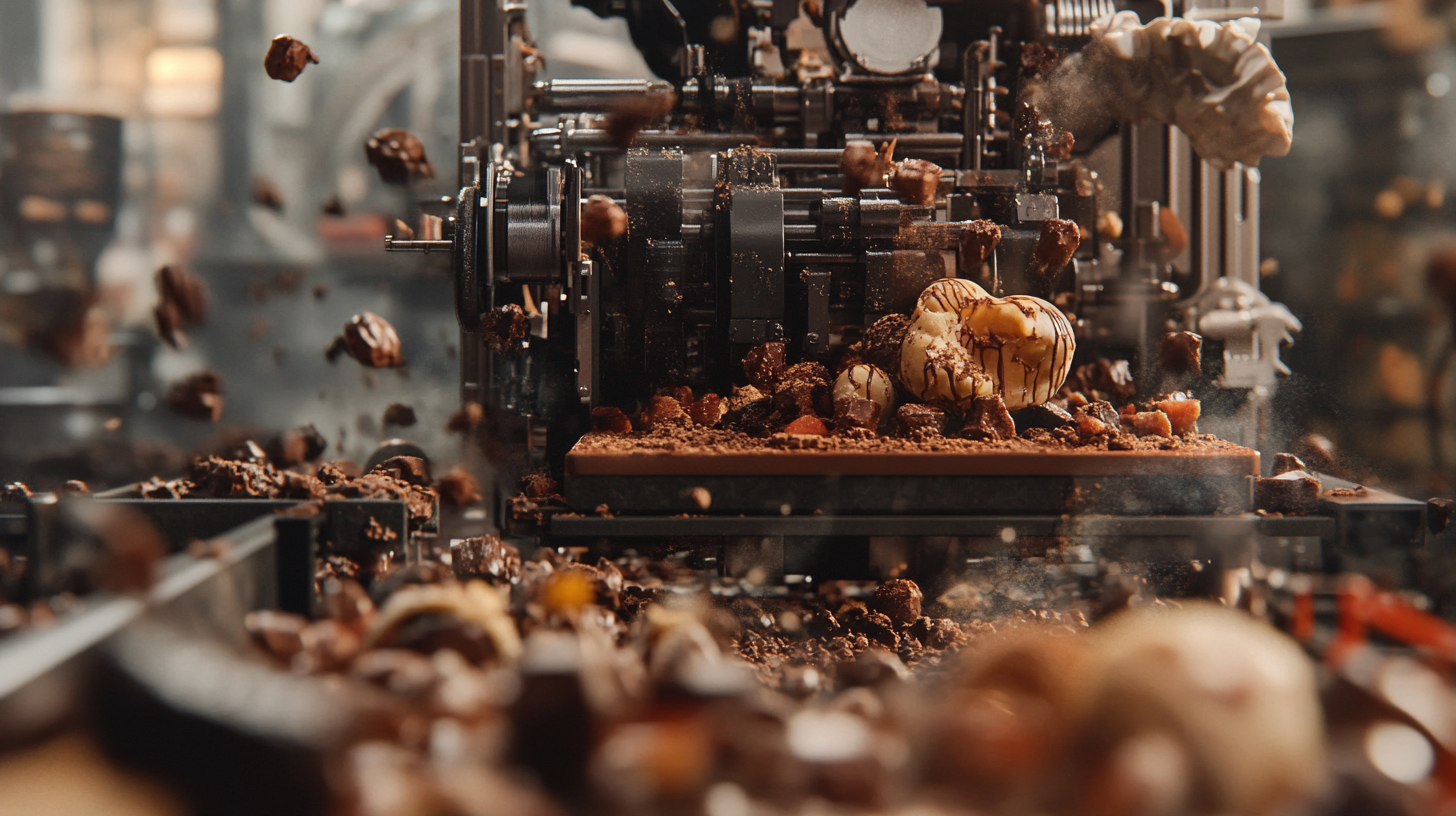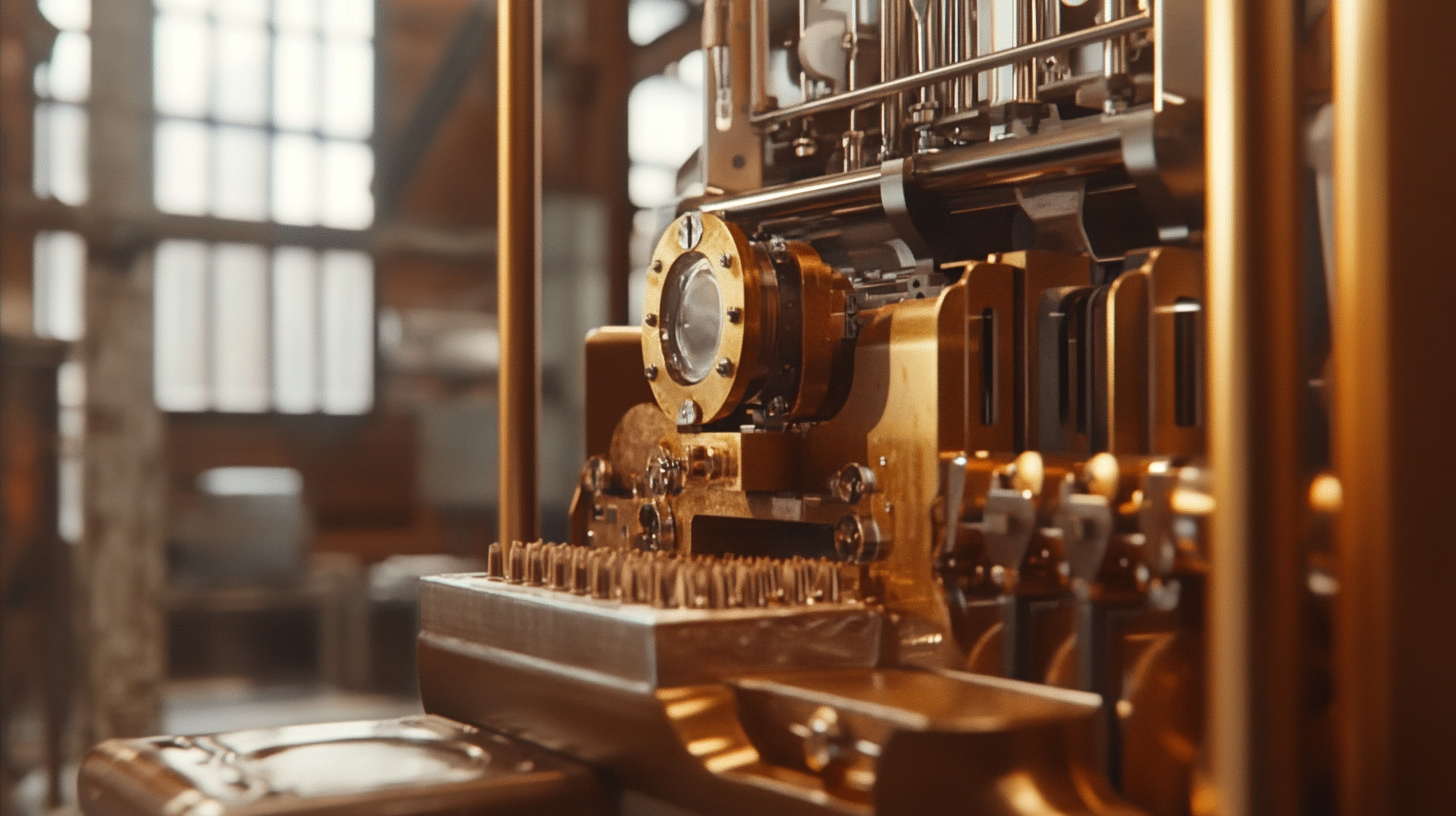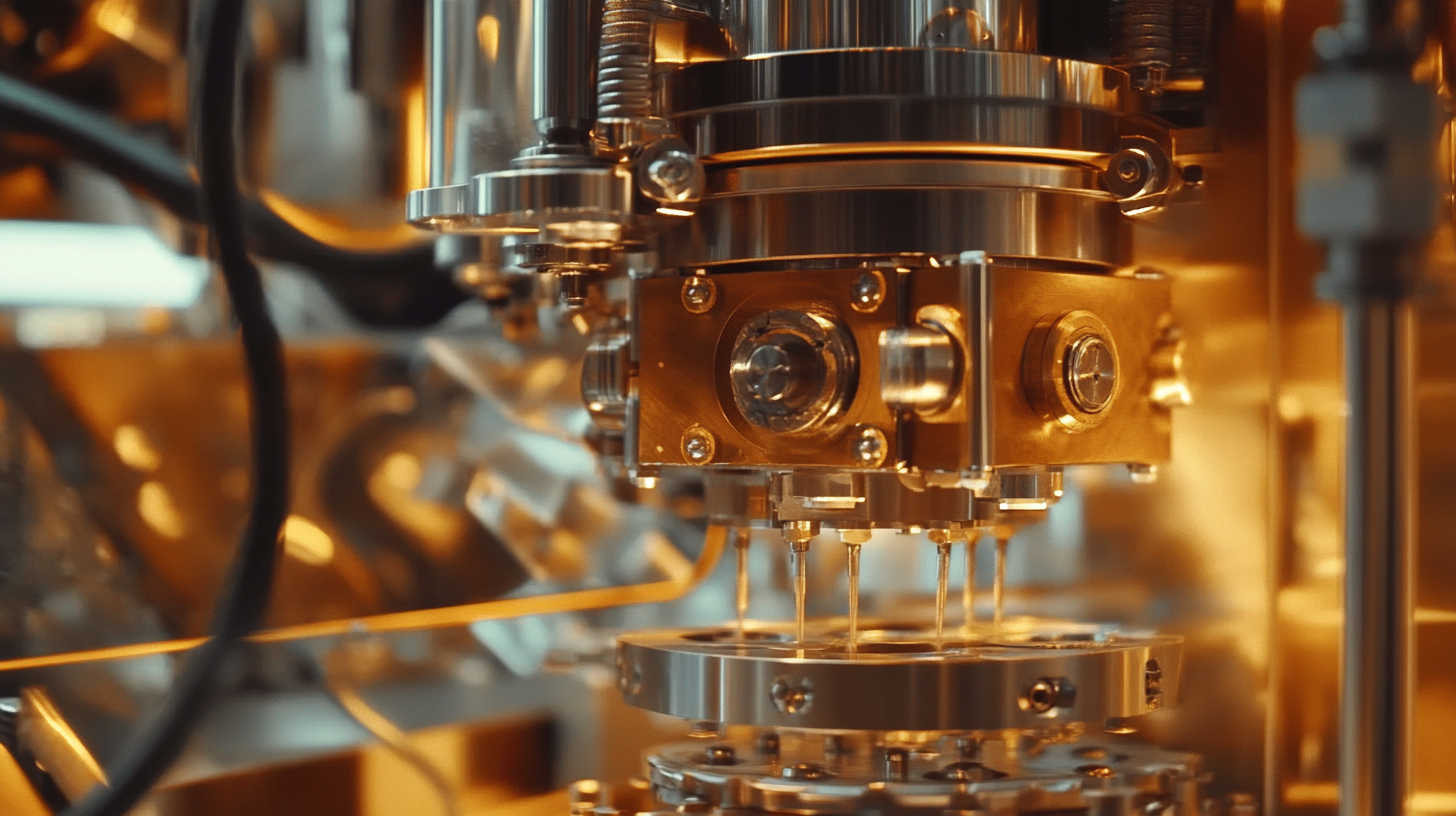Innovative Uses of Chocolate Machines in Confectionery Production and What They Can Do
The confectionery industry has experienced a significant transformation in recent years, driven by technological advancements and changing consumer preferences. According to a report by Grand View Research, the global chocolate market is expected to reach USD 161.56 billion by 2028, with a compound annual growth rate (CAGR) of 4.6% from 2021 to 2028. This growth presents a unique opportunity for manufacturers to enhance their production processes, and chocolate machines have emerged as pivotal tools in this evolution. These automated systems not only improve efficiency but also enable the creation of innovative chocolate products that meet the diverse demands of today's consumers.
Incorporating cutting-edge chocolate machines into confectionery production allows manufacturers to optimize various stages of the process, from tempering to molding and packaging. As noted in a report from Research and Markets, the adoption of automation in the food industry is projected to increase, with chocolate machines leading the way in terms of efficiency and consistency. By leveraging these advanced technologies, producers can reduce production time, maintain high quality, and even personalize products to cater to specific consumer tastes. As we explore the innovative uses of chocolate machines in confectionery production, it becomes evident that these tools are not just about efficiency—they are redefining the landscape of chocolate manufacturing.

Exploring the Evolution of Chocolate Machines in the Confectionery Industry
The confectionery industry has witnessed a remarkable transformation over the years, particularly with the evolution of chocolate machines. Initially, chocolate production was a labor-intensive process that required skilled artisans to temper, mold, and package the product. However, advancements in technology have led to the development of sophisticated machines that streamline these processes, enabling mass production without sacrificing quality. The emergence of tempering machines, enrobing machines, and automated molding lines has allowed manufacturers to produce chocolate more efficiently, maintaining consistent texture and flavor across batches. In recent years, the integration of automation and smart technology has further revolutionized chocolate production. Modern chocolate machines are now equipped with sensors and AI capabilities that monitor various parameters—such as temperature, humidity, and mixing times—ensuring optimal conditions for chocolate formation. This level of precision not only reduces waste but also enhances product quality. Additionally, these machines can be programmed for versatility, allowing confectioners to experiment with different flavors, toppings, and shapes, thus pushing the boundaries of chocolate innovation. Furthermore, as sustainability becomes a focal concern in the industry, new chocolate machines are designed with energy efficiency and eco-friendly practices in mind. These advancements are aiding confectioners in reducing their carbon footprint while still meeting the growing consumer demand for high-quality, artisanal chocolates. The evolution of chocolate machines reflects a broader trend within confectionery production, where technology seamlessly integrates with traditional craft, ultimately shaping the future of chocolate.

Advanced Technologies Driving Chocolate Production Efficiency
The confectionery industry has witnessed remarkable advancements in chocolate production efficiency, primarily driven by innovative technologies. Chocolate machines have evolved significantly, integrating automation, precision engineering, and smart technology to streamline the manufacturing process. These innovations not only enhance the quality of the final product but also increase output, reduce labor costs, and minimize waste.
One notable advancement is the implementation of automated tempering machines. Traditional tempering methods require skilled labor and can be inconsistent, leading to quality variations. However, modern tempering machines utilize digital controls and precise temperature monitoring systems, ensuring that chocolate achieves the ideal crystalline structure. This results in a glossy finish, improved snap, and a longer shelf life, meeting consumer expectations for high-quality confectionery products.
Additionally, the integration of IoT (Internet of Things) technology allows manufacturers to monitor production processes in real-time. Smart sensors can track temperature, humidity, and flow rates, providing data that can be analyzed to optimize operations. This level of control helps confectioners make informed decisions, troubleshoot issues swiftly, and ultimately enhance production efficiency. The combination of these advanced technologies is revolutionizing the way chocolate is produced, paving the way for increased productivity and superior product quality in the confectionery sector.

Creative Applications of Chocolate Machines in Artisan Confectionery
In the world of artisan confectionery, the integration of advanced chocolate machines has revolutionized production processes, enabling chocolatiers to push creative boundaries. According to a report by Mordor Intelligence, the global chocolate market is projected to grow at a CAGR of 4.5% from 2021 to 2026, which underscores the increasing demand for innovative confectionery products. With this rapid growth, chocolatiers are leveraging cutting-edge machines to experiment with techniques such as 3D printing, which allows for intricate designs and shapes previously deemed impossible.
One notable application of chocolate machines is in the realm of personalization. Companies like TCHO have embraced innovative chocolate dispensers that allow consumers to create their own unique blends and molds right on the shop floor. This not only enhances customer experience but also caters to the growing trend of personalized gifts in the confectionery market, which has been highlighted in various industry reports forecasting consumer preferences towards bespoke products.
Furthermore, these machines facilitate the infusion of flavors and textures, transforming traditional chocolate into gourmet sensations. Utilizing technologies such as tempering machines and enrobing lines, artisans can achieve precise control over chocolate consistency, enabling them to incorporate unconventional ingredients like wasabi or exotic spices. The global gourmet chocolate market, valued at approximately $27.5 billion in 2021, is a testament to the effectiveness of these advanced manufacturing techniques in appealing to adventurous palates.
As confectioners continue to explore the creative applications of their machinery, the synergy of tradition and technology will push the boundaries of what chocolate can be, ultimately leading to innovative products that delight consumers and drive market growth.

Sustainable Practices in Chocolate Production: The Role of Modern Machines
In today’s confectionery landscape, the integration of modern chocolate machines not only elevates production efficiency but also promotes sustainable practices. These advanced machines are designed with energy efficiency in mind, reducing the carbon footprint associated with chocolate manufacturing. By optimizing energy consumption, manufacturers can significantly lower their operational costs while contributing to a greener environment.
Moreover, state-of-the-art chocolate machines employ innovative techniques such as bean-to-bar processing, which ensures that sustainability is woven into every step of production. This process allows producers to source cocoa beans directly from farmers, supporting ethical sourcing while maintaining high quality. Machines equipped with precise temperature and mixing controls improve the quality of chocolate while minimizing waste, as they can efficiently use raw materials to their fullest potential.
Additionally, modern technology facilitates closed-loop systems that allow for the recycling of by-products. For instance, leftover cocoa nibs can be repurposed into alternative products like cocoa powder or even as nutritious additives in other food items. By utilizing these advanced systems, chocolate manufacturers can foster a circular economy within their operations, making strides toward a more sustainable future in the confectionery industry. Through these innovative applications, modern chocolate machines significantly impact both production efficiency and environmental responsibility.
Future Trends: Innovations Shaping Chocolate Manufacturing Processes
The chocolate manufacturing industry is undergoing a remarkable transformation propelled by innovative technologies and creative machine designs. In the realm of confectionery production, modern chocolate machines are not just enhancing efficiency but are also enabling unique product development. From 3D chocolate printers to advanced tempering machines, these innovations are reshaping how chocolatiers approach their craft.
One exciting trend in chocolate manufacturing is the integration of smart technology into production lines. Machines equipped with IoT capabilities allow for real-time monitoring and data analysis, enabling manufacturers to optimize their processes and maintain consistent quality. This data-driven approach not only reduces waste but also improves energy efficiency, making production more sustainable. Furthermore, automation is streamlining labor-intensive tasks, allowing artisans to focus on the creative aspects of chocolate making.
Another notable advancement is the exploration of alternative ingredients and sustainable practices in chocolate production. Manufacturers are increasingly utilizing equipment that supports the use of non-traditional ingredients, such as plant-based options and natural sweeteners. This shift not only caters to the growing demand for health-conscious products but also drives innovation in flavor and texture. As consumers seek unique experiences, chocolate machines are adapting to produce personalized and artisanal products that reflect individual preferences and dietary needs.
In addition to these trends, companies are embracing customization through advanced design capabilities. With the help of cutting-edge chocolate machinery, businesses can create bespoke chocolates tailored to specific celebrations or branding requirements. This flexibility not only enhances customer engagement but also positions brands at the forefront of an evolving market where personalization is key.
